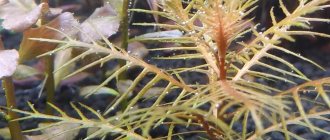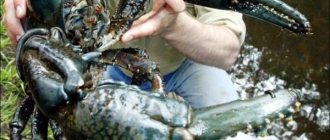Biotope is a geographical region with a homogeneous biological environment, as well as an even distribution of flora and fauna. This term is closely related to another term "habitat", but the two concepts have different characteristics. The word biotope comes from two Greek words: bios (meaning life) and topos (meaning place). Ernst Haeckel, a famous German zoologist, is credited with introducing the concept in his book General Morphology, published in 1866. In his book, Haeckel argues that an ecosystem, which he called a "biota", is the result of the interaction of the biosphere and environmental factors such as soil and water. However, there was another German scientist, Professor of the Berlin Zoological Museum F. Dahl, who first coined the term "biotope" in 1908 when classifying a separate ecological system.
Biotope characteristics
A biotope is determined by several characteristics. One of the main features is interaction with people. The biotope does not occur exclusively in wild environments, but can exist with human interaction. Many types of human activity are even necessary for the development of a biotope. An example of the interaction between a person and a biotope is a decorative flower bed, which is planted and grown by people, and in turn receive aesthetic pleasure from the flowers.
Another feature that distinguishes a biotope are artificial objects. Areas of human interaction may come into contact with artificial objects. Such items are suitable for biotope regeneration, and their location and design are critical to this process. Man-made objects made from biodegradable materials, such as mats made of jute or sisal, help in restoring the corresponding biotopes, especially when they interact with natural elements (sun, water and wind).
Another characteristic feature is that the biotope is defined on a micro scale, rather than on a macro scale, as is the case with an ecosystem. A biotope can be as small as an aquarium or even a tiny potted plant. Therefore, the conservation of the biotope is quite achievable due to its microscopic nature. Biotopes are open system values that are rarely identified individually and occur in interconnected networks of different biotopes.
Although the definition of a biotope places it in an ecological context, the term is also used in political and administrative contexts. It is widely used in close collaboration with the conservation, creation and regeneration of natural environments.
Trophic levels. Chains and power networks, their links
Trophic (food) level is a complex of organisms with the same type of nutrition that occupy a certain position in the food chain.
A food chain is a sequence of living organisms capable of transferring nutrients and energy from producers (plants) to consumers (predators). Neighboring links in the food chain form relationships based on the “food-consumer” principle. That is, if one group of organisms becomes food for another group, the links will be linked.
Classification of trophic levels:
- the first is formed by producers (photosynthetic plants);
- second - consumers of the first order (herbivores: sheep, hares, insects);
- third - consumers of the second order (primary predators, for which herbivores serve as food: a snake eating rodents, or a wolf eating a rabbit);
- fourth - consumers of the third order (predators feeding on consumers of the second order, or secondary predators: an owl eating snakes).
Individuals of the same species can occupy several trophic levels depending on food sources (for example, a polar bear, consuming berries, is considered a consumer of the first order, but, eating a rodent, becomes a consumer of the second order).
The top of the food chain is usually occupied by apex predators, which, as a rule, do not have serious enemies (for example, a crocodile or a shark).
The energy contained in some organisms is consumed by other organisms in the process of circulation of substances. The transfer of energy and food from its source - autotrophs (producers) through a number of organisms occurs along the food chain, by eating some organisms by others. A food chain is a series of species or groups thereof, each previous link in which serves as food for the next. The number of links in it may vary, but usually there are 3 - 5.
Best articles: Vomiting in cats: types, treatment and prevention
Food chains are divided into:
- pasture;
- detrital.
Grazing food chains are grazing chains. The main source of food here is green plants (producers).
For example, grass (autotroph) → hare → fox. Such food chains are directly dependent on solar energy. The cycle of matter and energy in nature is determined by pasture food chains.
Detrital food chains are chains of decomposition that use dead remains as the main food source. Organic remains, or detritus, form the beginning of detrital food chains.
For example, leaf litter (detritus) → earthworm → thrush → sparrowhawk. This type of food chain is less dependent on solar energy. The main factor in the existence of this chain is the influx of organic substances from another system. Detrital food chains accumulate substances and energy in the ecosystem.
Food chain meaning:
- the study of food chains allows us to trace feeding interactions between different organisms in the ecosystem;
- knowledge of food chains makes it possible to assess the mechanism of energy movement and trace the movement of substances in the ecosystem.
Food chains are not isolated from each other. They interact with each other to form food webs. A food web is a conventional figurative designation of the trophic relationships of producers, consumers and decomposers in a community. When evaluating food chain diagrams, it can be noted that each organism feeds only on a specific organism. In fact, this is not always the case. Typically, living organisms can use organisms from different populations as a food source. Even organisms from adjacent food chains can act as a nutritional component for them. Thus, it is possible for food chains to intertwine to form food webs.
Application in Germany
As the original origin of the term "biotope", Germany has made great strides in creating biotope regeneration and protection, and also serves as a model that other countries can emulate. The biotopes are recognized in German law. The "Bundesnaturschutzgesetz" is a federal law passed in 1976 that provides for the protection of biotopes, including the species of flora and fauna living in them.
Other provincial laws complement this federal law, protecting specific habitats from harm caused by land development. "Landschaftsplan" is a regulation adopted in many regions of Germany, which sets out the need for proper urban planning, protection of natural landscapes and the environment during urban development. German law also requires cities to give priority to the creation of recreational areas during urban development and thereby protect existing biotopes. It is assumed that establishing an authentic natural landscape in cities makes local residents feel the need to preserve and protect the Environment.
Several cities in Germany play an important role in the creation and conservation of the biotope. One such city is Berlin, which has a green zone. The city administration relies on the so-called “territorial biotope factor”, which establishes and preserves the green zone. The territorial factor of the biotope is a key ecological parameter in the development of natural areas in Berlin. The city is known for setting goals to protect its habitats while promoting high quality urban development.
links
- Glynn P.V. (1973) Ecology of a Caribbean coral reef. Reef Plates Biotope: Part II. Plankton community with evidence of depletion. Marine Biology 22: 1–21.
- Odum E.P. and G.V. Worrett (2006) Fundamentals of Ecology. Fifth edition. Thomson Editorial. Mexico. 614 rub.
- Purves WK, Sadava D, GH Orians and HC Heller. (2001) Life, Science of Biology. 6th ed. Sinauer Associates, Inc. and W. H. Freeman and Company. 1044 rub.
- Udvardsky MFD (1959) Notes on the ecological concepts of habitat, biotope and niche. Ecology 40: 725–728.
- Whittaker R.H., Levin S.A. and Ruth R.B. (1975) On the reasons for distinguishing between “niche, habitat and ecotope”. American Naturalist 109: 479–482.
Biotope protection in Sweden
Another European country that attaches great importance to the conservation of biotopes is Sweden. The state's decision to protect the most vulnerable habitats is consistent with obligations under the United Nations Convention on Biological Diversity and the implementation of national environmental obligations set by parliament. There are seven main habitats that are permanently protected by the Swedish government. These include tree lines, rock fences, willow banks, springs, wetlands, rock piles, small shrubs and tree stands found in agricultural regions.
All habitat areas in Sweden are smaller than 20 ha. Sweden understands the great importance of a biotope in the development of plant and animal biodiversity and therefore invests in improving and protecting these natural places. The seven permanently protected habitats are at greatest risk of collapse due to recent land use trends, despite their importance to many species.
In addition to the seven types of habitats protected by the Swedish government, there are dozens of other habitats that are protected by various institutions and administrations, including 19 habitats protected by the Swedish Forestry Agency and about 16 protected by local authorities and municipalities.
Advantages of the biological method
For decades now, ecologists have been talking about the dangers of chemicals used to control insect pests. To make the destruction and reduction of populations of harmful inhabitants of agricultural land safer, biological methods of plant protection have been developed. They consist in using some living organisms against others. These methods are absolutely harmless from an environmental point of view (unlike the chemical method of plant protection) - their use has no consequences for humans, beneficial insects, birds, animals and microorganisms.
Biological protection has a prolonged validity period, which makes it also cost-effective. It is most often used as a preventive measure, applied before pests cause significant damage to cultivated plantings. Or used as additional protection after chemical treatment.
Any insecticide, once applied to plants, has a limited period of action. The second and subsequent treatments can be replaced with biological means of protection.
History of the term
The concept of biotope was put forward in 1866 by the German zoologist Ernst Haeckel in his book “General Morphology of Organisms” (in which he defined the term “ecology”)
In it, he emphasized the importance of the concept of habitat as a prerequisite for the existence of organisms, explaining that in a given ecosystem, its biota is shaped by environmental factors and interactions between living organisms. The original idea of the biotope was closely related to evolutionary theory
And in 1908, a professor at the Berlin Zoological Museum, F. Dahl, introduced the term biotop to refer to the concept
type
Terrestrial biotopes
They are characterized by the fact that the biocenosis is located on the ground as a substrate and immersed in the air as a medium.
They have a latitudinal variation, so as we move in a latitudinal direction we will find tropical, temperate and cold habitats. In turn, each area will have as many biotopes as there are possible combinations of soil types, topography, altitude and climate.
Aquatic biotopes
In this case, the main medium in which the biocenosis is immersed is liquid water. There are marine and freshwater aquatic biotopes, which differ in depth gradient (vertical) and horizontal zoning.
In the marine area, this is where more diversity of biotopes is achieved. Conditions vary depending on whether they are in a pelagic (open sea), benthic (ocean floor) or abyssal (deep sea pits) environment.
Sea currents, depth and temperature are the determining factors in the biocenosis that is established in these.
Transitional or mixed biotopes
The physical environment of these biotopes includes terrestrial and aquatic elements. Wetland ecosystems or riparian zones fall into this category. The biocenosis occupying this type of biotopes has evolved, adapting to this mixed state.
Organisms can perform part of their cycle in one or another area of the biotope. Typically, they depend on the flow of matter and energy that occurs between the aquatic and terrestrial environments. Among these biotopes we find estuaries, swamps, swamps, deltas and coasts..
Peculiarities
The following four points are the main features of biotopes.
Microscale
A biotope is not usually considered to be a large-scale phenomenon. For example, a biotope could be a nearby park, a back garden, even a conservation plant or a fish tank on a driveway. In other words, biotope is not a macroscopic, but a microscopic approach to preserving the ecosystem and diversity of life forms. In this way, biotopes fit into the daily activities and lives of ordinary people with a large number of people able to take part in the creation of the biotope and its ongoing management.
Biotope networks
It is usually emphasized that biotopes should not be isolated. Instead, biotopes must be connected to each other and other surrounding life; without these connections to life forms such as animals and plants, biotopes would not effectively function as places in which diverse organisms live. Thus, one of the most effective strategies for biotope regeneration is to plan for
biotopes are not just
points
where animals and plants come and go. (Such an organic transport course is called a corridor.) In the elastic method, the center of the network would be large green strips of land: a forest, a nature park, or a cemetery. By connecting patches of land to smaller areas of a biotope, such as a greenbelt along a river, small town parks, gardens, or even roadside trees, biotopes can exist in a network. In other words, a biotope is an open, not a closed system and is a real strategy.
Human daily life
The term "biotope" does not refer to reserves of the biosphere that are completely separate from people and become the object of human fascination. Instead, it is an active part of human daily life. For example, a decorative flower garden can be considered a biotope (albeit a small one) since it enhances the experience of everyday life. An area that has many functions, such as human living space, and is home to other living beings, or plant or animal, can be considered a biosphere reserve.
Artificial
When artificial points are introduced into a biotope setting, their design and arrangement are very important for the regeneration of the biotope. Tree planting areas where the surface is uneven results on plants that grow and nesting of small insects. A mat or net made from natural fibers will gradually decompose as it is exposed to the weather. Thus, there is no binary opposition between natural and artificial in a biotope. Rather, such artificial materials are widely used.
Aquariums
The term "biotope" is also used by people in the aquarium hobby to describe an aquarium setup that attempts to simulate the natural habitat of a particular fish. The idea is to replicate conditions such as water parameters, natural plants, water type (fresh, salt marsh or brackish), lighting, and include other native fish that usually live together in nature and as such represent a particular real biotope. An example of one South American biotope type might be lots of bog oak, a few native plants, dark underlayers and subdued lighting with floating plants, along with marbled axes, angels, cardinals, otos, corys and plecostomus.
How does an ecosystem differ from a biogeocenosis?
The need to introduce the concept of biogeocenosis is caused by the fact that the ecological system does not have a spatial reference (an ecosystem can be a cow with microorganisms parasitizing on its body). Biogeocenosis is always a certain separate section of the biosphere. From this point of view, biogeocenosis can be considered as a special case, or one of the types of ecosystem, which has a clear territorial reference. Consequently, limitation to a certain territory is the main difference between a biogeocenosis and an ecosystem. The concept of “biocenosis” is conditional, since organisms cannot live outside their environment, but it is convenient to use in the process of studying ecological connections between organisms.
An ecosystem is often identified with a biogeocenosis. I. Dediu believes that the categories ecosystem and biogenocenosis coincide at the level of the plant aggregate and differ only above and below this level.
The group and the nonliving environment function together as an ecological system (ecosystem). The term biocenosis corresponds to the grouping, and biogeocenosis corresponds to the ecosystem. Thus, not only two terms are superimposed - ecosystem (proposed by A. Tensley) and biogeocenosis (proposed by V.M. Sukachov), but also two slightly different approaches. An ecosystem, for example, can be, according to the broad interpretation of many scientists, both an ocean and a drop of water. In the view of V.M. Sukachov, biogeocenosis is an ecosystem within a specific phytocenosis.
Differences from habitat, biocenosis and ecological niche
All areas of the planet occupied by living beings make up the biosphere. It works as an integrated system, but in practical terms it is divided into smaller units.
The largest units are biomes, defined by general climate characteristics. In turn, biomes are divided into ecosystems with different communities consisting of populations of different species.
An ecosystem is the interaction of a biotic community (a collection of living beings of different species) with its abiotic environment.
There are several ecosystem-related concepts that relate to different levels of organization. In some cases, the terms may be confused, so it is necessary to establish the difference between the two.
Biotope and hABITAT
Habitat refers to the geographic area occupied by one or more populations of a particular species. Although in some cases the term biotope has been used as a synonym for habitat, these are different concepts.
The concept of biotope refers to the geographical area where a community (a collection of populations of different species) develops. That is, a biotope includes many habitats.
For example, in a tropical rain forest we may find a species of monkey whose habitat is the treetops, in the upper canopy of the forest, while the jaguar has a habitat in the understory (the forest floor). Both species exist in different habitats, but coexist in the same biotope - rain forest.
Biocenosis and biotope
Ecosystems are shaped by communities of living things, the relationships among them, and their relationships with the physical environment.
Biocenosis is a living part of an ecosystem. It consists of all species that form populations, which in turn group into communities. This involves symbiotic relationships between different populations and between communities.
Instead, as mentioned above, a biotope is the physical environment in which these communities develop.
Biotope and ecological niche
Another term that is confused with the term "biotope" is the term "ecological niche". However, this category refers to species, not communities.
It refers to the functional relationship of a species with the community of which it is a part. It includes all the adaptations of that species to its environment, especially with regard to the place it occupies in the food web of the ecosystem.
Components
A biotope is formed through the complex interaction of a large number of abiotic factors that serve as support for the matrix of life in the ecosystem. The main components are the medium, the substrate and environmental factors.
Facilities
This is the question in which the biocenosis is immersed. At the same time, living organisms move and perform their functions.
The main means are air and water. However, there are very specific remedies, such as mammalian intestines. This forms an ecosystem with a biocenosis of bacteria, fungi and protists, and the environment is the pericellular and cellular contents of the intestinal tract.
Substrate
This is the question of why living things settle in an ecosystem. The most common is soil, but in the case of many aquatic biotopes, water is both intermediate and substrate.
Environmental factors
Life can only exist within a certain range of environmental conditions, and each organism has optimal functioning adapted to each abiotic factor. Thus, this biotope has a dynamic balance of abiotic factors, which allows this biocenosis to exist.
Among the environmental factors we have the following:
Solar radiation
The level of solar radiation and its quality affect the community of living beings that can exist in the biotope. Solar radiation deficiency limits bioproductivity and affects the food web.
water
If humidity is limited in a given area, only a certain biocenosis can develop. On the other hand, the aquatic environment determines a biocenosis that is different from the terrestrial environment.
temperature
The range of temperatures at which living things can perform their basic functions is limited. Above a certain limit, most proteins are denatured.
At high temperatures, the number of species that can be part of the biocenosis is very small (only thermophilic archaebacteria). At the other extreme, when the temperature is very low, living things that can survive are also scarce.
Chemical composition of the medium and substrate
Plant species and soil biota respond to the chemical composition and physical and pH characteristics of the substrate within a certain range.
In water, salinity and pH are the determining factors. Another important element is the proportion of gases that make up the air in a given biotope.
weather
It is critical to determine the diversity of species that may live in a given area. In a temperate zone biotope subjected to a four-season regime, the biocenotic characteristics are very different from those of the warm tropical regime.
relief
The physical form of the land influences other environmental factors. Temperature decreases with altitude, and runoff and the presence of water in the subsurface depend on the slope.
For example, masses of air rise when they hit a mountain and thicken as they rise, creating clouds and orographic rain. This determines very specific environmental factors, such as high humidity, which contributes to the development of a certain biocenosis.
Mosaic and tiered
The spatial structure of the biocenosis is determined by the location of living organisms of different species relative to each other in the horizontal and vertical direction. Tiering ensures the fullest use of the environment and an even distribution of species vertically. Thanks to this, their maximum productivity is achieved. So, in any forest the following tiers are distinguished:
- terrestrial (mosses, lichens);
- grassy;
- shrubby;
- arboreal, including trees of the first and second sizes.
The corresponding arrangement of animals is superimposed on the tiers. Thanks to the vertical structure of the biocenosis, plants make full use of the light flux. So, light-loving trees grow in the upper tiers, and shade-tolerant trees grow in the lower ones. Different horizons are also distinguished in the soil depending on the degree of saturation with roots.
Under the influence of vegetation, the forest biocenosis creates its own microenvironment. There is not only an increase in temperature, but also a change in the gas composition of the air. Such transformations of the microenvironment favor the formation and layering of fauna, including insects, animals and birds.
The spatial structure of the biocenosis is also mosaic. This term refers to the horizontal variability of flora and fauna. Mosaic area depends on the diversity of species and their quantitative ratio. It is also influenced by soil and landscape conditions. Often, people create an artificial mosaic by cutting down forests, draining swamps, etc. Because of this, new communities are formed in these territories.
Mosaic character is inherent in almost all phytocenoses. Within their boundaries, the following structural units are distinguished:
- Consortia, which are a set of species united by topical and trophic connections and dependent on the core of this group (central member). Most often, its basis is a plant, and its components are microorganisms, insects, and animals.
- Sinusia, which is a group of species in a phytocenosis, belonging to similar life forms.
- Parcels representing a structural part of the horizontal section of a biocenosis, differing from its other components in its composition and properties.
§ 5. Biocenosis. Diversity of biocenoses General biology: Textbook for 11th grade
Photosynthesis). The activity of producers determines the initial accumulation of organic substances in the Biocenosis (see Biomass, Biological productivity). 2) Consumers (consumers) - heterotrophic organisms that feed at the expense of autotrophic ones. First-order consumers are herbivorous animals, as well as parasitic bacteria, fungi and other achlorophyllous plants that develop at the expense of living plants. Second-order consumers are predators and parasites of herbivorous organisms. There are consumers of the 3rd and 4th orders (superparasites, superparasites, etc.), but in total there are no more than 5 links in the food chain. At each subsequent trophic level, the amount of biomass decreases sharply. The activity of consumers contributes to the transformation and movement of organic substances into the biocenosis, their partial mineralization, as well as the dissipation of energy accumulated by producers. 3) Decomposers (reducers) - animals that feed on the decaying remains of organisms (saprophages), and especially non-parasitic heterotrophic microorganisms - contribute to the mineralization of organic substances, their transition to a state assimilated by producers.
The interrelations of organisms in a biocenosis are diverse. In addition to trophic connections that determine food chains (sometimes very unique - see Parasitism, Symbiosis), there are connections based on the fact that some organisms become a substrate for others (topical connections), create the necessary microclimate, etc. It is often possible to trace in a biocenosis groups of species associated with a particular species and entirely dependent on the latter (consortia).
Biocenosis is characterized by division into smaller subordinate units - merocenoses, i.e. naturally formed complexes that depend on the Biocenosis as a whole (for example, a complex of inhabitants of rotting oak stumps in an oak grove). If the energy source of the Biocenosis is not autotrophs, but animals (for example, bats in the Biocenosis of caves), then such Biocenoses depend on the influx of energy from the outside and are inferior, representing in essence merocenoses. In the Biocenosis, other subordinate groups of organisms can be distinguished, for example, sinusia. Biocenosis is also characterized by vertical division into groups of organisms (biocenosis tiers). In the annual cycle in the Biocenosis, the number, stages of development and activity of individual species change, and natural seasonal aspects of the Biocenosis are created
The study of Biocenosis is important for the rational development of lands and water spaces, because only a correct understanding of the regulatory processes in Biocenosis allows a person to withdraw part of the Biocenosis’s products without disturbing or destroying it
Go to page: 123
Interesting on the topic
Expert commission An expert commission is formed to conduct an environmental assessment of a specific facility by a body that has the right to appoint, initiate and conduct state or public environmental ...
Global environmental problems, causes and consequences In this essay we will consider one of the most relevant and exciting topics today. The problem of environmental pollution is becoming so acute due to the volume of...
Melting in plasma-arc furnaces with a ceramic crucible Melting in plasma-arc furnaces - Furnaces of this type, in terms of their design, are a modification of conventional arc steel-smelting furnaces
The essence of environmental impact assessment. Types of environmental control The basis of the Russian environmental assessment system is environmental impact assessment and environmental impact assessment (EIA), as well as the coordination of applied approaches with international ...











